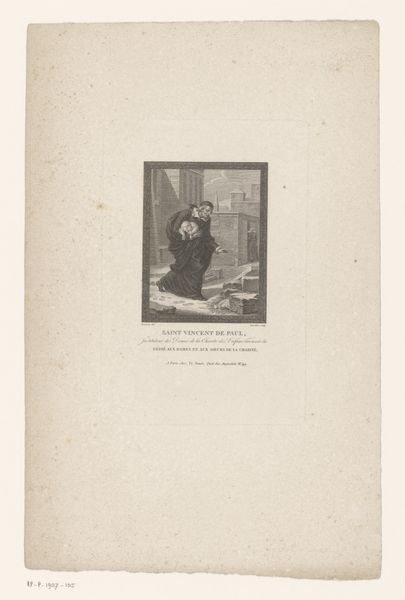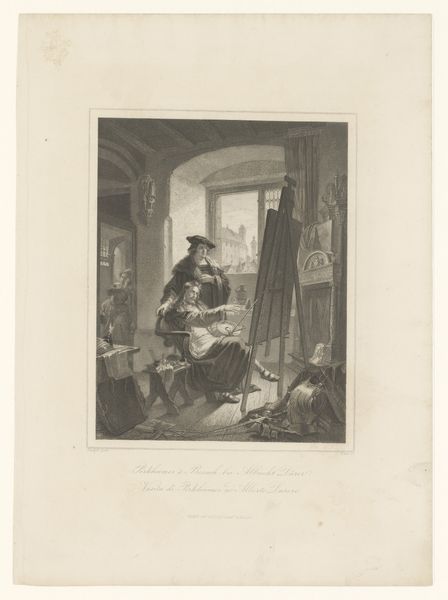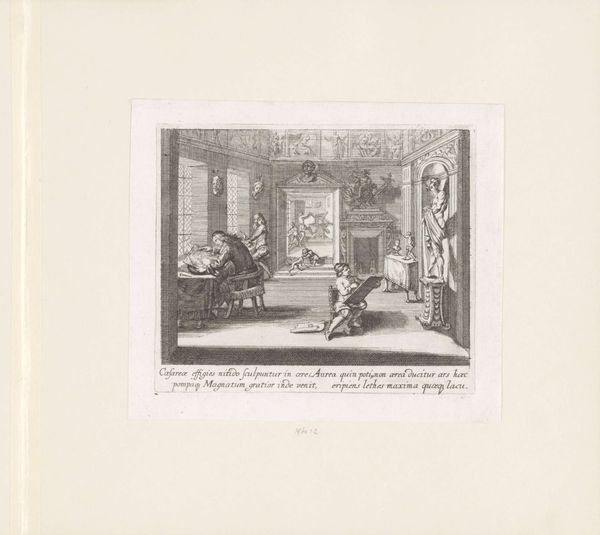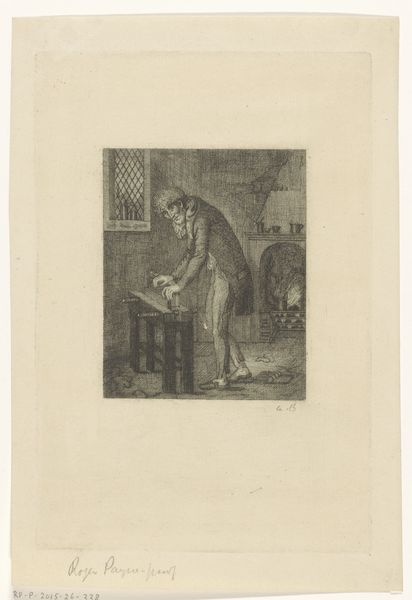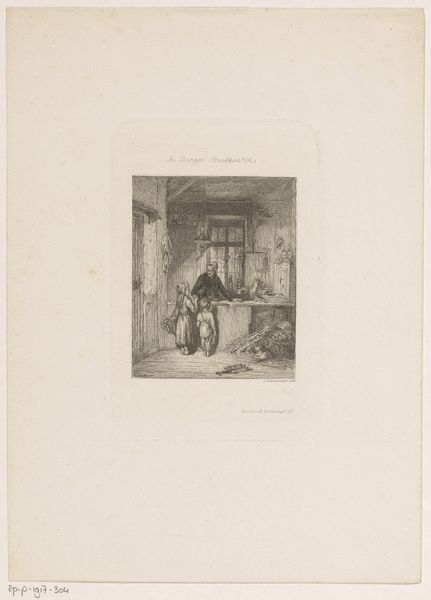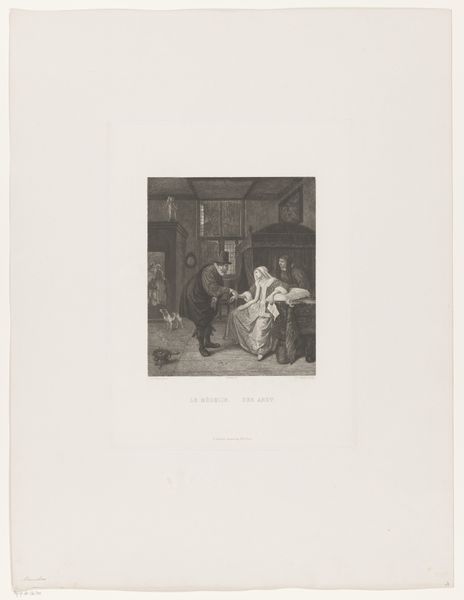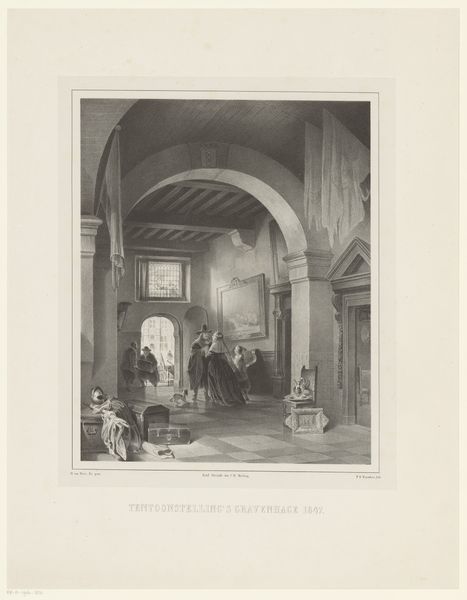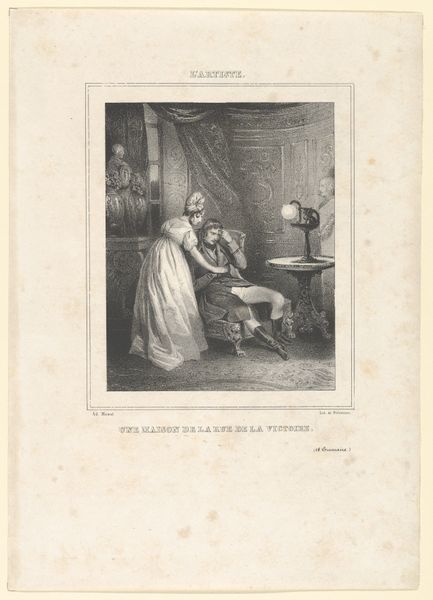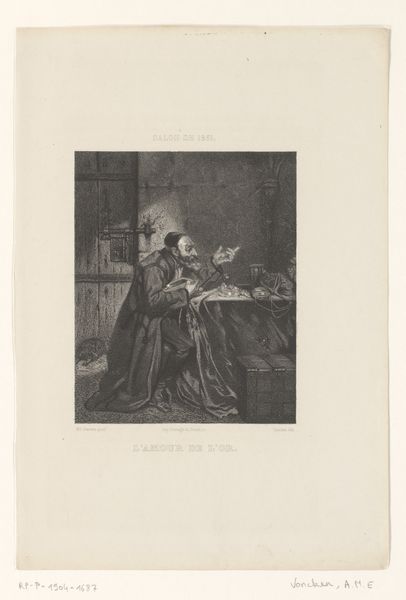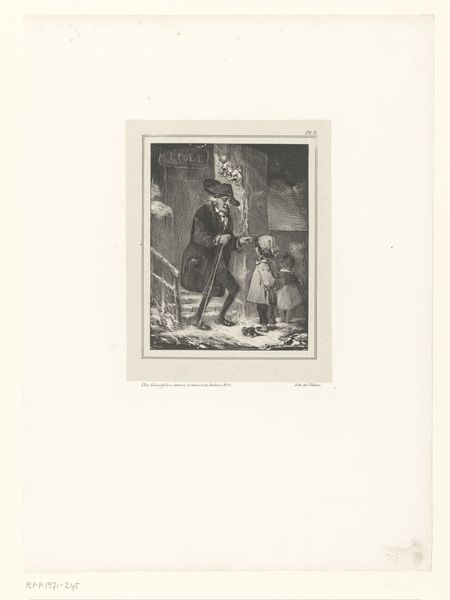
print, engraving
#
portrait
# print
#
genre-painting
#
engraving
#
realism
Dimensions: height 264 mm, width 215 mm, height 171 mm, width 153 mm
Copyright: Rijks Museum: Open Domain
Curator: This print, dating from 1838-1899, is entitled "Peinzende kunstenaar in zijn atelier"—"The Thinking Artist in his Studio." It's attributed to N. Dietz. Editor: My first thought is…melancholy. The artist's posture, the dimly lit studio, and the presence of armor—it all evokes a sense of pondering both the past and present conditions. Curator: Precisely. The image offers a fascinating glimpse into the romanticized view of the artist's existence in the 19th century. Here, the studio isn’t just a workspace, but a carefully curated space projecting an image of intellectual depth. Notice how the armor hints at a connection between artistic endeavor and notions of heroic pursuit. Editor: Absolutely. And look at the engraving itself. It's a steel engraving, judging by the precision. Consider the labor involved in creating those fine lines, translating an artist’s moment of creative block into a mass-produced image for wider consumption. It completely changes the reception of the original idea. Curator: It speaks volumes about the evolving art market, indeed! Engravings like this helped popularize genre painting and portraiture and their styles, making art accessible to the expanding middle class. Also it democratizes images by challenging unique or original "aura" to reproducible images, raising questions around copies. Editor: Thinking about process again, what paper was used? Was it handmade, what about the inks, and who did produce the print itself. Knowing details on production may help understand which consumer was this print directed at. The level of detail indicates high skills as a maker. It’s intriguing to think about the artisan translating one media to another media and another style for distribution. Curator: Those details really give this context and richness! The rise of art journals at the time played a significant role in shaping artistic taste, further enhancing the importance of reproductions. Dietz’s print existed within that network. Editor: This brings another thought... Was this commissioned, reproduced on its own, sold by Dietz as individual engravings? So many social and economic contexts at play in what seems like a simple scene. Thank you, I am never going to see these types of images the same. Curator: Well said! Understanding how artworks circulate within broader social and cultural contexts unlocks deeper meaning for sure.
Comments
No comments
Be the first to comment and join the conversation on the ultimate creative platform.
